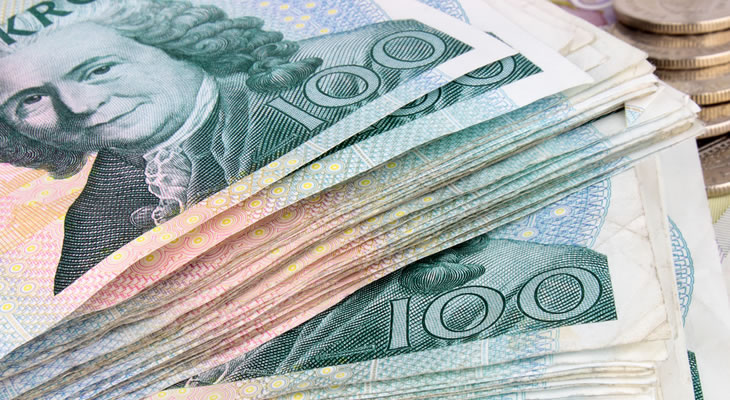The Pound Sterling to Swedish Krona (GBP/SEK) exchange rate strengthened on Tuesday as service sector PMI data out of the UK beat economist forecasts and as data out of Sweden mostly disappointed.
The Pound Sterling to Swedish Krona (GBP/SEK) exchange rate hit a session high of 12.7985
Sterling made gains against the majority of its most traded peers following the release of the latest Markit compiled service sector Purchasing Managers Index (PMI).
The report showed that activity in the dominant sector increased to a reading of 58.9 last month from 56.7. Economists had been expecting a figure of 57.0.
The increase was the strongest seen since August 2014 and adds to the positive construction and manufacturing PMI’s released last week.
The better-than-forecast data increased optimism that the UK economy expanded strongly in the first quarter of the year. Markit now believes that the economy expanded by 0.7%, up from the 0.6% seen in the fourth quarter of 2014.
‘The three PMI surveys collectively indicate that the economy grew by 0.7% in the first quarter, reviving from the slowdown seen late last year. Faster growth of new business and improved expectations of prospects for the year ahead also bode well for the upturn to retain strong momentum as we move through the spring. While the data support the view that the next move interest rates will be upward, the lack of inflationary pressures suggests the first hike remains some way off, and probably not this year unless we see some significant upturn in wage growth,’ said Markit’s chief economist Chris Williamson.
Mixed Swedish Data Weighs on Krona
The Swedish Krona softened against the Pound and several other peers on Tuesday following the release of mixed domestic economic data.
The session got off to a positive start for the Krona as data released by Swedbank showed that service sector activity in the Scandinavian nation improved in March. The PMI rose to 57.2 from the 56.7 in February. The data also showed that all sub-indices except employment growth were in positive territory.
The employment sub-index fell from the 56.4 seen in February to 54.8 in March. It was the second consecutive monthly decline.
The Swedish Krona then went onto the retreat, as a separate report released by Statistics Sweden, showed that industrial production fell last month. Production dropped to an annual rate of -0.1% from -1.3%. The data disappointed economists who had been forecasting for a rise of 0.3%.
New orders for the nation’s manufacturing sector also tumbled by -3.1% in February, a sharp decline from the 8.9% rise recorded in the preceding month.

